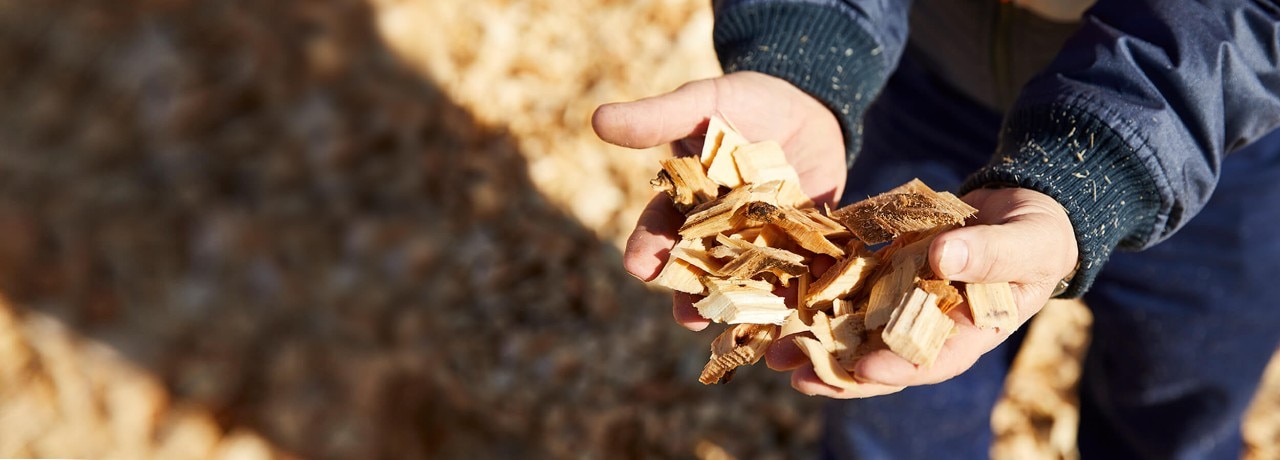How a forester planned and adapted for business expansion - NAB
It’s been 13 years since David Brand first established his sustainable real assets management company, New Forests. As the founder and CEO, he’s seen the business grow from $50 million to $5 billion in assets under his management.
See the forest for the trees
David Brand’s passion for sustainable forestry began in his childhood, spent enjoying the great outdoors in Canada’s majestic national parks.
“I’ve been in forestry since I was about 18,” he explains. “When I was a teenager, I was always out camping, canoeing, out in the woods. When I came to finish high school, I went into forestry and I’ve stayed in it all my life.”
Having grown up in old growth forests, Brand says he has a “strong environmental approach”.
“I was concerned they were logging huge old trees there and my job was in the forestry side, planting back the trees. I found that planting wasn’t really for me, so I did a PhD and researched the physiology and ecology of forests.”
That led him to science and eventually to the Director General of Science role for the Canadian Department of Forestry. There, he worked on globally important trade negotiations concerning forestry (including some of the preparatory work for the Euro Summit and Kyoto Protocol).
Starting a new business
Later, Brand spent time running a small office in Sydney for an American forestry investment management business. It was there the seed of an idea began to germinate.
Deciding that, for business growth, separation was needed, Brand conducted a management buyout in 2005 and New Forests became a stand-alone viable business.
“Our objective was to be the first Asia-Pacific-based forestry investment management business for institutional investors,” he explains. “We wanted to be a leader in thinking about new ways to bring investment capital into the forestry sector, particularly the plantation forestry sector.
“Most of our competitors were international and we were Australian, so we had a home field advantage.”
Rather than a setback, the global financial crisis (GFC) was a catalyst for business growth for New Forests. The company was forced to consider its long-term future.
“There was a huge surge of interest away from synthetic debt products and into what we call ‘real assets’, such as infrastructure, real estate, forestry, and agriculture,” Brand says. “They were perceived as being more stable, long-term assets that pension funds and other institutional investors could own.”
Branching out for business growth
There were difficult times, however, and Brand was compelled to adapt.
“Some of our existing clients at that time were direct investors and they got into financial difficulty,” he says. “We had to scramble to change our business model and look at raising our funds, and that, fortunately, has proven successful – but it was a risky thing to do.”
New Forests then put forward a dedicated investment product for Australia and New Zealand. Many saw it as an attractive business investment region, exposed to the growth story of Asia with stable and mature timber markets in operation. The company raised its first co-mingled fund in 2010, “a breakthrough moment for us that sent us on the journey of funds management”.
The second big catalyst for growth was the collapse of the managed investment scheme industry, which held retail plantation programs. New Forests bought many of those programs and converted them into quality forestry assets, which have generated steady returns.
The third significant step was branching out into processing, sawmills and wood-chipping, moving down the value chain into physical wood products and markets, capturing more value for investors.
Engagement and loyalty
Brand attributes much of New Forests’ success to the ways in which his background supported a purpose-driven corporate culture. That combined with an active management approach toward creating value in forestry.
“We have an engaged approach,” he says. “I’m a forester. I go out and walk through the forests we’re looking to buy. Many of our people are foresters so we’ve been hands-on in terms of thinking about how to add value to these assets. We’ve really worked to create vertical integration, where we have seed nurseries and forestry assets, sawmills and woodchip mills, and sales and distribution to customers… We now have a very big, diverse business, and we’re a dominant player in some of the markets we operate in.”
Establishing a client base was also key.
“Our clients have become quite loyal,” Brand says, “and I think that’s a reflection of not just our returns but also the fact that we’re transparent and we have a real commitment to operating on a responsible and sustainable basis.”
New Forests’ investors tend to be large institutions, including about 70 per cent pension funds, reinsurance companies and a large medical benefits trust.
“They’re all companies with long-term liabilities that are looking to invest in large portfolios of assets that can generate returns and cash yield into the future,” Brand says.
Expand market share
Global demand for timber is constantly growing, Brand says.
“When we bought some of the large plantations here in Australia,” he says, “we thought it might be difficult to find the market to take all the timber. It’s been taken in the blink of an eye.”
New Forests keeps a running forecast of how much timber it plans to produce each year. It then markets products directly, in some cases via sub-branded subsidiaries, including woodchip subsidiary New Forests Timber Products and sawmill arm Timberlink.
“We’re still actively investing and buying forests,” Brand says, explaining that expansion into new areas is the next challenge.
Today, with $5 billion in funds under management, the company is also investigating a novel investment strategy linking forestry with the carbon offset market in California, through an office located there. Future investments may also include acquiring land for planting trees in new markets and new biomass fuel opportunities.
Timberlink also recently announced a $100 million upgrade to its South Australian mill, bringing in the latest technology to secure long-term competitiveness.
Contributing to the low-carbon economy is an ongoing initiative of New Forests, exploring and developing new business opportunities.
“By thinking about environmental and social benefits that can be linked with the forestry sector,” Brand says, “we’re meeting our investor client demand as well as contributing to the growth of the global low-carbon economy through wood products.”
Tips for growing your business
If growing your business matters to you, we’re here to make it happen.
Other business moments
Checklist for the first steps in starting a business
Tips, links and calculators to cover the basics.
Grow your business by hiring the right staff
Tips to help you find workers who are right for the job.
Five property investment tips for business owners
How to generate additional income streams to help grow your business.
Related products and services
Insurance and advice
Explore solutions that can help protect both your business and your employees.
Business loans
Manage your cash flow, purchase stock or inventory and grow your business with our wide range of business loans.
NAB QuickBiz unsecured business loan
Fast, unsecured business lending made easy. Get access to funds for your business without physical assets as security.
Get in touch
Request a call back
Let us help with your business banking needs. Request a call back to chat with one of our business bankers.
Contact us
Explore our business banking contact information and get support with a wide range of products, services and topics.
Visit a NAB branch
Our business bankers are located all around Australia.
Important information
Apologies but the Important Information section you are trying to view is not displaying properly at the moment. Please refresh the page or try again later.
The information contained in this article is intended to be of a general nature only. It has been prepared without taking into account any person’s objectives, financial situation or needs. Before acting on this information, NAB recommends that you consider whether it is appropriate for your circumstances. NAB recommends that you seek independent legal, financial and taxation advice before acting on any information in this article.





